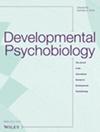Long-term effects of social play on neural and behavioral development remain unclear. We investigated whether just 1 h of juvenile social play could rescue the effects of play deprivation on stress-related behavior and markers of neural plasticity. Syrian hamsters were reared from postnatal days 21–43 in three conditions: peer isolation, peer isolation with daily social play sessions (dyadic play), or group-housed with littermates. In adulthood, subjects were exposed to acute social defeat stress, and we examined changes in perineuronal net (PNN) expression surrounding parvalbumin (PV) neurons in the prelimbic (PL), infralimbic (IL), and basolateral amygdala (BLA). Peer deprivation led to exaggerated submissive and defensive behavior in a conditioned defeat test, but 1 h of dyadic play rescued the heightened conditioned defeat response in both males and females. In females, play deprivation reduced PNN/PV coexpression in the PL and IL compared to control groups with opportunities for social play. Males exposed to peer isolation showed elevated agonistic behavior when returned to their littermates compared to males exposed to 1-h play encounters. These findings indicate juvenile social play has long-lasting effects on PNN expression surrounding PV cells in the medial prefrontal cortex, which allows for the development of species’ typical agonistic behavior and greater stress resistance in adulthood. The ability of just 1 h of social play to rescue the effects of peer isolation highlights the powerful role of social interactions in neural and behavioral development.


